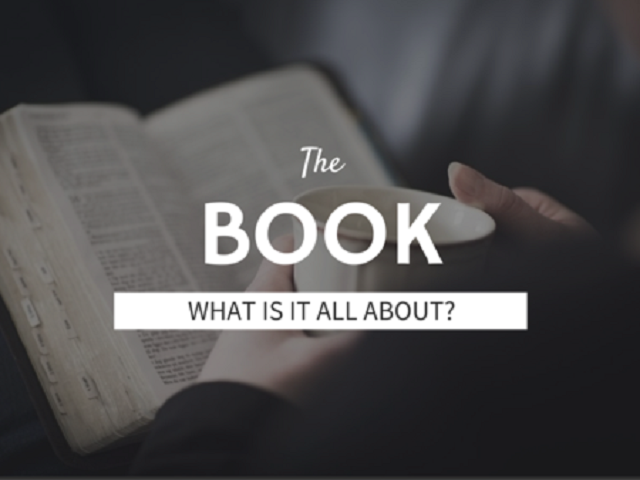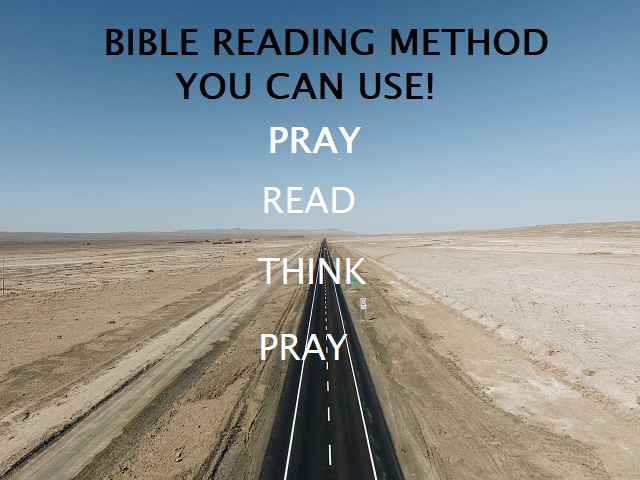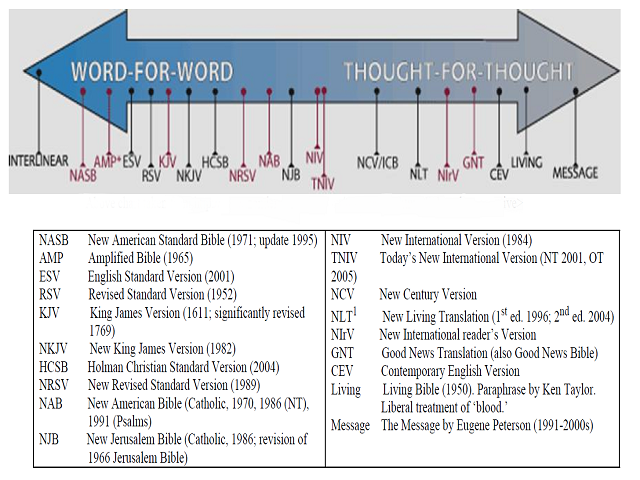WHAT IS
THE BIBLE
ALL ABOUT THE BIBLE!
The Bible contains 1189 chapters: 929 in the Old Testament and 260 in the New. Reading three chapters each day and five chapters on Sundays will cover the entire Bible in one year. We have 70 Individual Bible Reading Plans here. Even one chapter each day will cover the New Testament in only nine months. God's Word is alive!

The Bible was written over 1500 years between about 1400 BC and 95AD. The Old Testament is God's dealings with Israel and consists of 39 books written and collected together over 1000 years from 1400BC to 400BC. Then there was a big gap of 400 years until Jesus was born. The New Testament consists of 27 books written between about 50AD and 95AD and is the record of the life and gospel of Jesus Christ. The Old Testament was originally written in Hebrew and Aramaic while the New Testament was written in Greek. Thus the Bible you read is a translation of these original ancient manuscripts which were very carefully preserved and translated.
The Index /Table Of Contents
Because the Bible was written by many people over a long period of time, the books of the Bible are not arranged alphabetically but topically, chronologically and by the type of writing. It is a bit confusing at first. So most Bibles have an Index or Table of Contents in the front. This will give you the page numbers of the various books of the Bible. So if your pastor says to look up the book of Romans, you go to the Index and find it there, and then go to the page it indicates.
The Structure Of The Bible: Testaments, Books, Chapters and Verses
When you open your Bible and look at it you will notice it is not structured like most other books, it is written more like a legal document in which everything is numbered. It is essential to understand this structure.
The Bible is divided into two Testaments, (a Testament is like a will or a contract), the Old Testament which mainly details God's dealings with the nation of Israel and the New Testament which contains material about Jesus and the Church.
Each Testament contains many separate "books" which were originally bible scrolls written by various prophets and apostles. The Old Testament contains 39 books, and the New Testament includes 27 books. More on the themes of each Book of the Bible here.
Each book is divided into chapters - which generally are about one or two pages long. Each chapter is then divided into "verses" which are short sections of Scripture, usually about a sentence or a paragraph in length. The verse numbers were put in there to help people find their place in the Bible.
Eventually, people came up with a shorthand notation to refer to Bible verses that describes the book, chapter, and verse. The shorthand consists of the name of the book, followed the space, then the number of the chapter, a colon, and then the number of the verse like this: John 3:16.
So John 3:16 indicates the book of John, chapter 3, and verse 16.
So when someone says something like "please find John 3:16 " this is what you do:
- Go to the index and find the book of John (it is in the New Testament).
- Go to the page number for the book of John indicated in the index.
- Then turn the pages until you get to chapter 3.
- Then look down until you find verse 16.
Recommend you check out our individual 70 Bible Reading Plans here.

A BIBLE READING METHOD YOU CAN USE
The following is a bible reading method. It is very straighforward: Pray, Read, Think, Pray.
Pray:
Ask God to open up His Word to you. "Lord open my eyes that I may see wonders from your Word".
Read:
Read a short passage of Scripture about ten to fifteen verses or a chapter. Start with the New Testament first and read it in order from Matthew to Revelation.
Think:
Think about what you have just read and asked some of the following questions:
- What does the passage say about God? What does it say about the Father, about the Son, and about the Holy Spirit?
- What does the passage say about life? Does it teach some essential principles? Is there a command to obey, a warning to heed, some wise advice for living?
- What does the passage say about your daily situation? Is there something you should be doing? Does it shed light on your professional life, family life or church participation?
- Has Jesus spoken to you in a special way through the Bible today? If so what did He say to you?
Pray:
Write out a prayer to God based on what you have learned from your Bible reading. Something like "Lord help me to love my neighbor as myself." or whatever lesson you have learned that day.
WHERE TO START
Where should you start when reading the Scriptures? With the material about Jesus. That is the New Testament and especially the gospels. Here is my suggested order for reading the whole Bible. It will take about three years to finish if you read one chapter per day and one year to finish if you read 3 or 4 chapters a day.
Start your day by talking to God, reading the Bible and reflecting on your day. You may need to set aside a quiet space, and a few moments, but it’s a small step that will leap your forward in your faith.
Recommend you check out our individual 70 Bible Reading Plans here.
Read the New Testament in order, starting with Matthew and going book by book until you reach the last chapter of Revelation. This will give you a good idea about Jesus, the Church, and Christian living.
What Is The Best Bible To Use?
Many people are confused by a large number of different bible translations available. This has come about because the Bible was written in three original languages Hebrew (most of the Old Testament) Aramaic (some of the OT) and Greek (the New Testament). There are different types of bibles depending on how they choose to do the translation process:
Recommend:
The most common Translation used by Pastors and folks is the New International Version (NIV) and recommend giving to people when they are converted. As it is considered a dynamic translation but seeks to balance between word-for-word (Literal Translations) and thought–for thought translations styles (Dynamic Translations). New International Version (NIV) finds a balance from literal and dynamic as it is easy to read but is still very accurate. Recommend buying a New International Version (NIV) here online at Christian Book. Com. If you are new to the Bible would recommend the New International Devotional Bibles at a reasonable price here which has comments along with the scriptures to help you think about what you read.
Literal Translations:
These translate the Bible with word by word and are very accurate. While they are very faithful to the original text, they can be somewhat clumsy when put into English. Literal translations include the King James version, The New King James Version, the Revised Standard Version, and the New American Standard Bible.
Dynamic Translations:
Are translated phrase by phrase or concept by concept. They are still quite accurate but not as literally accurate as those above. They are much easier to read and understand. They include the New International Bible, the New English Translation, The Contemporary English Version and many others.

Translation Chart
The Literal Translations as the Bible translated Word For Word and the Dynamic Translations more thought for thought translated. You will notice the NIV (New International Version is right in the center for being a good word for word and still good for thought for thought translated.
Paraphrases Translations:
Very loose translations of the bible they rearrange the material within each paragraph so it flows smoothly and put the bible into very contemporary concepts. They should not be used for an in-depth Bible study but are very easy for daily bible reading. Many find them helpful when you are new to the Bible as we all were at one time and over time and growth you go to more a literal or dynamic translation.
Paraphrases include the Message, the Good News Bible, the Living Bible, the New Living Bible, and many others. Many years ago, my first Bible given to me by someone who cared was a Good News Bible, when I had no knowledge of the Bible. It was perfect for making the Bible easy to understand at that time in my life.
Wrong or Misleading Translations:
These include the New World Translation of the Jehovah's Witnesses and other versions produced by cults.
From all the above here are my recommendations:
You should use the most accurate version available in your language. It should also be sufficiently modern for you to read it easily. The King James or Authorized Version is a very accurate Bible but was written four centuries ago in a different form of English known as Elizabethan English. Many of the words it uses are now obsolete or have changed meaning, for instance, the word "prevent" means "to go before" in the King James Version and the word "handsome" means sly and tricky - not attractive. So because it can confuse people I do not generally recommend the King James Version. The New King James Version is an equally accurate translation with more modern English.
Good translations include the NIV (New International Version), ESV ( English Standard Version), NASB (New American Standard Bible), and NRSV (New Revised Standard Version). Some easy to read but not so accurate translations include The Living Bible (LB), The New Living Bible (NLB), The Message (MSG), The Good News Bible (GNB) and the Contemporary English Version (CEV). Most Pastors use the New International Bible and easier to follow along on Sunday if you have the same translation.
Translation Comparison of Selected Passages Proverbs 18:24
KJV - A man that hath friends must shew himself friendly: and there is a friend that sticketh closer than a brother.
NIV - A man of many companions may come to ruin, but there is a friend who sticks closer than a brother.
NASB - A man of many friends comes to ruin, But there is a friend who sticks closer than a brother.
ESV - A man of many companions may come to ruin, but there is a friend who sticks closer than a brother.
Message - Friends come, and friends go, but a true friend sticks by you like family.
If you are unsure what translation you feel comfortable reading and understanding the Bible, check out and read some of the translations on Bible Gate Way here.
Devotional Bibles:
The goal of a devotional Bible is to help readers apply biblical concepts to their daily lives. These Bibles do this by including inspiring stories, memorable anecdotes, clever analogies, applicable quotations and thought-provoking questions to get people thinking about what the Scripture means to them personally. Recommend giving NIV Devotional Bible to those new to the Bible. They are very useful and can be bought online here at Christian Book. Com. We have a suggested list of 16 Devotional Bibles and shipped for under $16.00 USD for those on a budget here.
Study Bibles:
A study bible is a bible translation plus footnotes that explain the text and help the reader to grasp its message. The NIV Study Bible can be bought online at Christian Book. Com here. The NIV translation is easy to read, quite accurate and the notes and helps in the NIV Study Bible are excellent.
Difference Between a Devotional and Study Bible.
Devotional and Study Bibles are both designed to help Christians better understand God's word in different ways. Both contain the entire text of the Bible and supplementary resources. A Study Bible helps clarify the meaning of the Scriptural text itself and the historical context. While a Devotional Bible may also do this, its primary focus is helping readers apply Scripture to their daily lives. For those new to the Bible or are new Christians we highly recommend any of these Devotional Bibles here.

FINDING THE TIME
Fifteen minutes is about all you need to read a chapter of the Bible, think, take a few notes, then pray. I do my daily bible reading first thing in the morning as I wake up with my first cup of coffee for the day. Other people have their 'quiet time" on the bus or train on the way to work or at lunch on a bench in the park. My wife has her bible reading time at night just before she goes to bed. Any time that you can carve out as a habit on every day of the week is the best time.
Find a quiet place where you can pray and read and think in private. We "find time" for those things that are important to us and surely meeting God in His Word should be the most important thing in our lives. You do not have to use special words or kneel down or adopt a special bodily posture, it is the attitude of your heart that counts. I like praying as I go for early morning walks.
Our purpose and goals are that you as an individual will find the Bible reading plan that will make you successful in reading God's Word. Each Bible Reading Plan is designed for different type of individuals and their reading strengths and weaknesses, and each plan has different lengths from 2 weeks to one year here.
Getting Started with a Bible Reading Plan
They are as varied as each, so you have many to choose from. Consider the following options here, but remember to select one at our 70 Bible Reading Plans here. Regular reading in God's Word is not optional. It's a necessity! To be successful Bible reader we all need a Bible Reading Plan to follow. Recommend you check out our individual 70 Bible Reading Plans here.
BOOKS & RESOURCES: That Can Help You Understand The Bible.
Note: Some of these resources below are from our sister website www.biblesnet.com.
- Commentaries
These analyze passages of the Bible in-depth for mature Christians, Sunday School Teachers, and Pastors. The Tyndale commentary series is good enough for most people while pastors and Bible students might want to use the New International commentaries on the OT and NT. Some good on- volume commentaries that treat the whole Bible in one volume are available - ask at your Christian bookstore or you can read online here.
An excellent commentary is Matthew Henry's Commentary read online here. Matthew Henry's Concise Commentary (PDF file) Read or Save to your computer here. (be patient a large file to download)
Maps and Archaeology/Bible Lands
Knowing a bit about the life and times, history and culture of people in Bible lands can be fascinating and very helpful. You can also see our maps, archaeology and Bible Lands at Bible Maps here.
Bible Dictionary
Is a way to find all you need to know about the life and culture.
Easton's Bible Dictionary read online here.
Topical Bible
Is excellent for looking up topics of the Bible.
Torrey's New Topical Textbook - read online here.
Concordances
A concordance is like an extensive index to the Bible that lists the words in the Bible and where they can be found. They are very helpful in Bible study so that you can easily find all the verses on "money" or some other topic and find out all the Bible has to say about it. Good concordances include Strong's Exhaustive Concordances here.
Bible Programs & Software
Allow you to do this very quickly on a computer and have many other Bible helps as well. Good Bible search programs include Quick verse here and Logos here.
Search the Bible Online or Download Resources
Using online commentaries and other resources online at our Bible Study Tools section.
Or you can Download Resources here to your electronic device and use offline.-
Here are a few helpful tips on how to study the Bible and grow spiritually this year. Are you ready? Here goes…
Study a Book of the Bible - If you are new to the Bible or are a new Christian we highly recommend starting at the Book of John in the New Testament. We have two study guides on the Gospel of John.
Plan 1 - With the 21 days Bible Reading 5 minutes a day challenge, you'll walk with Jesus through the Gospel of John and engage God's Word on a daily basis. It's as easy as reading a chapter a day here.
SEE THE PLAN DOWNLOAD PDF Print the PDF and keep a copy in your Bible.
Plan 2 - This plan is 21 days Bible Reading 15 minutes a day challenge for new Christians and those searching and people on the go. Start your day by talking to God, reading the Bible and reflecting on your day. We have created a special series of study guides to go along with your daily reading on Gospel of John sent once a day by email for 21 days on the Gospel of John here.
MORE INFORMATION HERE OR SIGN UP
Home Bible Study Methods All Topics
Copyright 2016-2018. Questions God. Com. All Rights Reserved.
